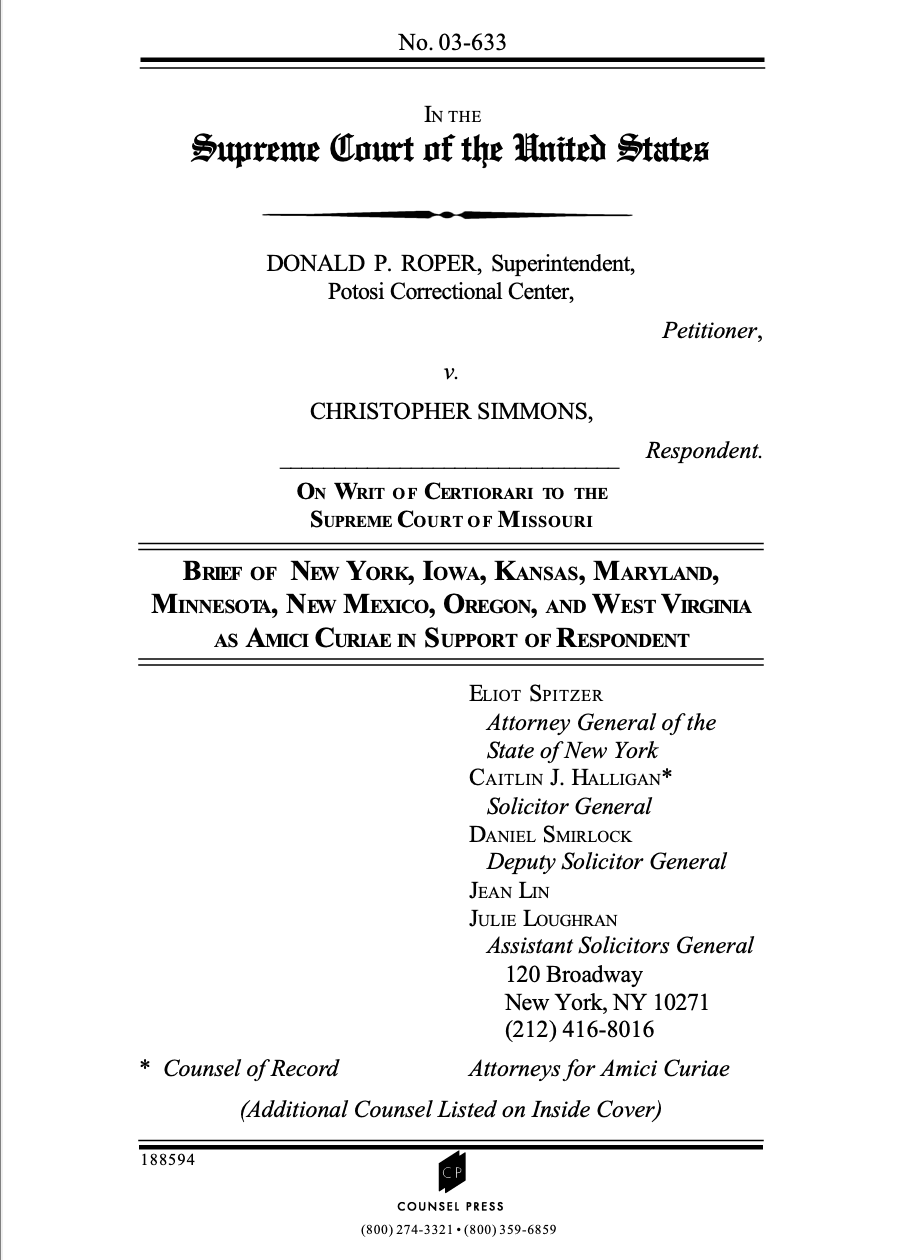
Summary of Argument
Under this Court’s Eighth Amendment jurisprudence, a punishment is “cruel and unusual” if a consensus among the states forbids it. Fifteen years ago, this Court did not find such a consensus with regard to the execution of juvenile offenders; the day was yet to come “when there is such general legislative rejection” of these executions. Stanford, 492 U.S. at 381-82 (O’Connor, J., concurring).
Today, legislative rejection of juvenile executions is widespread, and legislatures that have changed their laws in recent years have moved in one direction. In the 15 years since Stanford, seven states plus the federal government have joined those states that previously prohibited juvenile executions, while no state has lowered its minimum age for capital punishment below 18. Today, 31 jurisdictions plus the federal government prohibit the execution of offenders who were less than 18 at the time they committed their crimes, with 18 states explicitly setting 18 as the minimum age of eligibility.
This legislative consensus likely will endure because it emerged after steady deliberation, over a long period of time – longer than that previously found by this Court to sufficiently reflect a national judgment. See Atkins v. Virginia, 536 U.S. 304 (2002). By 1989, the last time this Court considered the issue, 11 states already expressly prohibited juvenile executions.
A simultaneous trend in recent years toward tougher treatment of juvenile offenders confirms that the choice to bar these executions is deliberate and considered. As the states have moved toward prohibiting juvenile executions, they have also enacted stricter juvenile justice laws that expose juveniles to adult criminal liability. All of the 18 capital punishment states that expressly shield juvenile offenders from the death penalty require or allow juveniles charged with murder to be prosecuted as adults. That many states treat juveniles offenders like adults, but make an exception when it comes to capital punishment, reflects a considered judgment that death is inappropriate for juvenile offenders. This mitigates against any hazard of prematurely declaring juvenile executions “cruel and unusual.”